#blog world building;;
Text
50 Character Personality Traits + Meanings (For writers, worldbuilders, and artists) Part 1
Adventurous - Enjoys trying new experiences and exploring the unknown.
Ambitious - Driven to succeed and achieve their goals.
Analytical - Tends to think critically and examine things in-depth.
Artistic - Highly creative and expresses themselves through artistic mediums.
Assertive - Confident in expressing their thoughts and feelings.
Caring - Shows compassion and concern for the well-being of others.
Charismatic - Has a natural charm and appeal that draws people in.
Clever - Able to come up with creative solutions and make astute observations.
Compassionate - Displays empathy and a desire to help those in need.
Confident - Believes in their own abilities and is self-assured.
Conscientious - Reliable, responsible, and attentive to detail.
Curious - Eager to learn new things and explore the world around them.
Cynical - Tends to be skeptical and distrustful of others' motives.
Dependable - Can be counted on to follow through on their commitments.
Determined - Persistent in pursuing their goals and overcoming challenges.
Diplomatic - Skilled at navigating social situations and resolving conflicts.
Eccentric - Displays unconventional or unusual behaviors and interests.
Empathetic - Able to understand and share the feelings of others.
Ethical - Guided by a strong moral compass and a sense of right and wrong.
Extraverted - Enjoys being around people and draws energy from social interactions.
Flexible - Adaptable to changes and open to trying new approaches.
Forgiving - Willing to let go of past hurts and give people second chances.
Friendly - Approachable and enjoys building positive relationships with others.
Grounded - Practical, down-to-earth, and focused on the present.
Hardworking - Diligent and dedicated in their efforts to achieve their goals.
Honest - Values truthfulness and integrity in their words and actions.
Idealistic - Driven by a vision of how the world should be and a desire to make a difference.
Imaginative - Possesses a rich inner world and creative problem-solving abilities.
Independent - Prefers to think and act for themselves without relying on others.
Indecisive - Struggles with making decisions and often second-guesses themselves.
Introverted - Finds energy and fulfillment in solitary activities and introspection.
Jealous - Experiences feelings of resentment or insecurity towards others.
Kind - Gentle, considerate, and thoughtful in their treatment of others.
Leaders - Able to inspire and guide others towards a common goal.
Logical - Approaches problems and decisions through a rational, analytical lens.
Materialistic - Highly values the acquisition of possessions and wealth.
Organized - Maintains order and efficiency in their personal and professional life.
Perfectionistic - Strives for flawlessness and can be overly critical of themselves and others.
Pessimistic - Tends to focus on the negative aspects of situations and expect the worst.
Resilient - Able to bounce back from setbacks and adapt to changes.
Risk-taker - Willing to take chances and step outside of their comfort zone.
Sarcastic - Uses irony and witty remarks to convey their thoughts and feelings.
Sensitive - Deeply affected by the emotions and experiences of themselves and others.
Stubborn - Unwilling to change their mind or compromise on their beliefs and opinions.
Suspicious - Inclined to doubt the motives and intentions of others.
Thoughtful - Considerate of the impact their words and actions have on others.
Timid - Shy, reserved, and hesitant to take risks or assert themselves.
Trustworthy - Reliable, honest, and worthy of confidence.
Unpredictable - Displays an element of surprise and spontaneity in their behavior.
Witty - Possesses a quick, clever, and humorous way of expressing themselves.
Hey fellow writers! I'm super excited to share that I've just launched a Tumblr community. I'm inviting all of you to join my community. All you have to do is fill out this Google form, and I'll personally send you an invitation to join the Write Right Society on Tumblr! Can't wait to see your posts!

#creative writing#writeblr#writing#thewriteadviceforwriters#on writing#writing tips#writers block#how to write#writers and poets#authors on tumblr#author#fiction#women writers#book writing#writer#writing advice#novel writing#writing blog#writer stuff#writers#writerscommunity#artists on tumblr#small artist#oc artist#world building#writersblock#writers on tumblr#helping writers#resources for writers#writerslife
3K notes
·
View notes
Text
Principles and Laws of Magic for Fantasy Writers
Fundamental Laws
1. Law of Conservation of Magic- Magic cannot be created or destroyed, only transformed.
3. Law of Equivalent Exchange- To gain something, an equal value must be given.
5. Law of Magical Exhaustion- Using magic drains the user’s energy or life force.
Interaction and Interference
4. Law of Magical Interference- Magic can interfere with other magical effects.
6. Law of Magical Contamination- Magic can have unintended side effects.
8. Law of Magical Inertia- Magical effects continue until stopped by an equal or greater force.
Resonance and Conditions
7. Law of Magical Resonance- Magic resonates with certain materials, places, or times.
9. Law of Magical Secrecy- Magic must be kept secret from the non-magical world.
11. Law of Magical Hierarchy- Different types of magic have different levels of power and difficulty.
Balance and Consequences
10. Law of Magical Balance- Every positive magical effect has a negative consequence.
12. Law of Magical Limitation- Magic has limits and cannot solve every problem.
14. Law of Magical Rebound- Misused magic can backfire on the user.
Special Conditions
13. Law of Magical Conduits- Certain objects or beings can channel magic more effectively.
15. Law of Magical Cycles- Magic may be stronger or weaker depending on cycles (e.g., lunar phases).
17. Law of Magical Awareness- Some beings are more attuned to magic and can sense its presence.
Ethical and Moral Laws
16. Law of Magical Ethics- Magic should be used responsibly and ethically.
18. Law of Magical Consent- Magic should not be used on others without their consent.
20. Law of Magical Oaths- Magical promises or oaths are binding and have severe consequences if broken.
Advanced and Rare Laws
19. Law of Magical Evolution- Magic can evolve and change over time.
20. Law of Magical Singularities- Unique, one-of-a-kind magical phenomena exist and are unpredictable.
Unique and Imaginative Magical Laws
- Law of Temporal Magic- Magic can manipulate time, but with severe consequences. Altering the past can create paradoxes, and using time magic ages the caster rapidly.
- Law of Emotional Resonance- Magic is amplified or diminished by the caster’s emotions. Strong emotions like love or anger can make spells more powerful but harder to control.
- Law of Elemental Harmony- Magic is tied to natural elements (fire, water, earth, air). Using one element excessively can disrupt the balance and cause natural disasters.
- Law of Dream Magic- Magic can be accessed through dreams. Dreamwalkers can enter others’ dreams, but they risk getting trapped in the dream world.
- Law of Ancestral Magic- Magic is inherited through bloodlines. The strength and type of magic depend on the caster’s ancestry, and ancient family feuds can influence magical abilities.
- Law of Symbiotic Magic- Magic requires a symbiotic relationship with magical creatures. The caster and creature share power, but harming one affects the other.
- Law of Forgotten Magic- Ancient spells and rituals are lost to time. Discovering and using forgotten magic can yield great power but also unknown dangers.
- Law of Magical Echoes- Spells leave behind echoes that can be sensed or traced. Powerful spells create stronger echoes that linger longer.
- Law of Arcane Geometry- Magic follows geometric patterns. Spells must be cast within specific shapes or alignments to work correctly.
- Law of Celestial Magic- Magic is influenced by celestial bodies. Spells are stronger during certain astronomical events like eclipses or planetary alignments.
- Law of Sentient Magic- Magic has a will of its own. It can choose to aid or hinder the caster based on its own mysterious motives.
- Law of Shadow Magic- Magic can manipulate shadows and darkness. Shadowcasters can travel through shadows but are vulnerable to light.
- Law of Sympathetic Magic- Magic works through connections. A spell cast on a representation of a person (like a doll or portrait) affects the actual person.
- Law of Magical Artifacts- Certain objects hold immense magical power. These artifacts can only be used by those deemed worthy or who possess specific traits.
- Law of Arcane Paradoxes- Some spells create paradoxes that defy logic. These paradoxes can have unpredictable and often dangerous outcomes.
- Law of Elemental Fusion- Combining different elemental magics creates new, hybrid spells with unique properties and effects.
- Law of Ethereal Magic- Magic can interact with the spirit world. Ethereal mages can communicate with spirits, but prolonged contact can blur the line between life and death.
- Law of Arcane Symbiosis- Magic can bond with technology, creating magical machines or enchanted devices with extraordinary capabilities.
- Law of Dimensional Magic- Magic can open portals to other dimensions. Dimensional travelers can explore alternate realities but risk getting lost or encountering hostile beings.
- Law of Arcane Sacrifice- Powerful spells require a sacrifice, such as a cherished memory, a personal item, or even a part of the caster’s soul.
---
✨ Hello, I'm Kali, The Plot Mage! ✨
I’m here to ignite your creativity and help you craft your next bestseller! Today is your lucky day, writer! 🪄 Whether you're battling writer's block or building an epic fantasy world, I've got just the tool you need to make your writing journey enjoyable and organized.
Introducing the all-in-one writer’s toolkit designed by a fellow fantasy writer. 🌟 This comprehensive resource includes:
- An in-depth worldbuilding worksheet (covering religion, lore, factions, currency, economics, and more)
- Character development worksheet
- Series roadmap
- Outlining and guided plot planning section
- Relationship dynamic worksheet
- Idea dump and a repository of helpful writing resources
- Task planner (from brainstorming to publishing and book marketing)
- Plus, free editable wanted posters and fantasy illustrations because you're special ❤️
✨ Use code "F4NTASY" for a magical 75% off! ✨
Happy writing, and let’s bring your fantasy world to life! 🌈📚






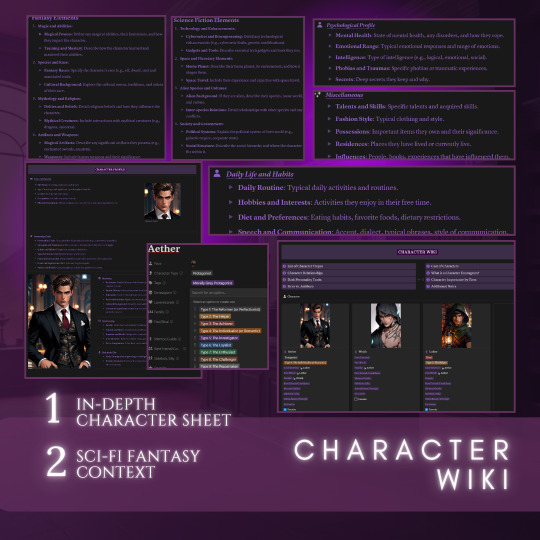
#writer#writing#writer things#writerblr#writerscorner#writing inspiration#writing tips#author#writers and poets#ao3 writer#writeblr#fantasy writer#sci fi and fantasy#writing inspo#writing resources#dnd campaign#dnd character#character development#original character#amwriting#writers community#writer stuff#writing blog#writers block#writerscommunity#worldbuilding#world building#fantasy series
3K notes
·
View notes
Text


Friendly reminder that we were robbed
#mine#avatar edits#avatar explore page#avatar for you#new avatar blog#avatar fics#avatar 2009#avatar the way of water#new avatar writer#new writer#Jake edits#Neytiri edits#avatar script#avatar blog#avatar community#avatar world building#deleted scenes#avatar deleted scenes#even if they didn’t add much to the film they were moments that showed the love they had for each other#and that’s enough for me#jeytiri#Jeytiri edits#jeytiri atwow#they’re still so playful with each other#it makes me giddy#new blog#avatar#avatar fyp
485 notes
·
View notes
Text
Wwx is the only mxtx main protagonist who would not be a my little pony fan. But he does own a 20% cooler shirt
#Xie lian is an elder pegasister because he just likes shows about love and kindness#hes been in the collectors fandom for forever and runs an angelfire blog that barely works#whereas shen yuan is in the exact opposite camp as a brony who got into it via 4chan#he does serious lore analysis on the series in his free time and is constantly complaining about plot holes / poor#world building but he loves the brony pandering episodes#wwx doesnt fall into any of those camps so hes kind of just normie i fear. but Jiang cheng is a brony#so he bought the 20% cooler shirt to bond/make fun of him#i think he does like rainbow dash tho#oh favorite ponies#xie lians is fluttershy of course. sys is nightmare moon as we've established#but out of the main six his favorite/least favorite is twilight who he feels unfortunately drawn to bc he relates#to her. but he wont admit it. wwx only knows rainbow dashs name cause he sees her in memes#jiang cheng likes rarity. of course
270 notes
·
View notes
Text

Slowly putting the first neighbourhood together and imho it looks sooooo nice! Just as I’ve imagined 😌
Also, I’ve learned how to recolour objects in the Sims4Studio and make backdrops (like e.g. those mountains) buyable and actually visible in game, so… God, somebody stop me pls! 😂
A couple more pics of what I’ve managed to do so far:



#pinemount ridges#ts4 world#ts4 save#ts4 save file#sims 4 save file#sims 4 saves#new sims blog#new simblr#ts4 build#ts4 simmer#ts4 simbrl#ts4 simblr#ts4 screenshots#sims4 screenshots
205 notes
·
View notes
Note
Hello! 😊 Do you have any advice on word-building? I can imagine multiple scenarios in my head, but I can't seem to put them into words. 🥹
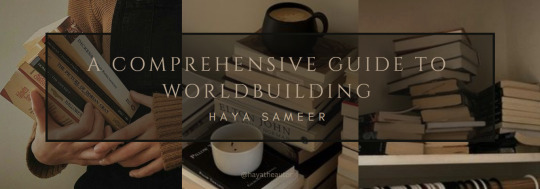
First off hi sorry I took forever to write this blog! I hope it helps you get your ideas onto paper <3
Worldbuilding is the backbone of any compelling story, especially in genres like fantasy, science fiction, and historical fiction. Crafting a believable, immersive world can captivate your readers and provide a solid foundation for your narrative. In this guide, I’ll walk you through the essential steps to create a vivid and engaging world for your story.
Understanding Worldbuilding
Worldbuilding involves creating a complete, fictional universe that serves as the setting for your story. This process includes developing geography, cultures, history, politics, and even the rules of nature and magic (if applicable). The goal is to make your world feel as real and intricate as the characters who inhabit it.
Starting with the Basics
Define the Genre and Tone
Consider the genre of your story. A high-fantasy world will have different requirements than a dystopian future or a historical setting. The tone—whether it's dark and gritty or light and whimsical—will also influence your worldbuilding decisions.
Establish the Setting
Start with the physical world. Sketch out maps, outline the geography, and decide on key locations where your story will unfold. Think about the climate, natural resources, and the flora and fauna that inhabit this world.
Develop a History
Create a backstory for your world. Major events, wars, discoveries, and cultural shifts shape the present-day setting. A rich history can add depth and realism, influencing characters’ beliefs and motivations.
Building Cultures and Societies
Craft Unique Cultures
Think about the various cultures in your world. What are their customs, traditions, and social norms? How do they dress, what languages do they speak, and what religions do they follow? Diverse and well-thought-out cultures can add layers to your narrative.
Political Systems and Power Structures
Define the political landscape. Who holds power, and how is it distributed? Are there monarchies, democracies, or tribal councils? Consider the relationships between different nations or groups and the potential for conflict.
Economics and Resources
Understand the economy of your world. What resources are abundant or scarce? How do people trade, and what currencies do they use? The distribution of resources can drive plot points and character motivations.
Crafting Magic and Technology
Magic Systems
If your world includes magic, establish clear rules and limitations. What are the sources of magic? Who can use it, and how? Consistent magic systems prevent plot holes and maintain suspension of disbelief.
Technology Levels
Consider the technological advancements in your world. Are they using medieval weapons, steampunk machinery, or advanced futuristic gadgets? The level of technology can influence daily life, warfare, and exploration.
Time and Place
Historical Context
Establish the timeline of your world. Is it set in the past, present, or future? Consider historical events that have shaped the current state of the world. How have these events influenced societal development and cultural evolution?
Daily Life and Schedules
Describe the daily routines of your characters. What does a typical day look like for different social classes or cultures? Consider work hours, leisure activities, and societal expectations. The pace of life can vary greatly depending on technological advancements and cultural norms.
Timekeeping and Calendars
Develop a system of timekeeping and calendars. Are there specific seasons, festivals, or holidays that are significant? How do people measure time—by the sun, moon, or a mechanical clock? Unique timekeeping methods can add depth and authenticity to your world.
Clothing and Fashion
Cultural Significance
Explore how clothing reflects cultural identity, status, and occupation. Different regions and social groups might have distinct styles, fabrics, and accessories. What materials are commonly used, and how are garments crafted?
Fashion Trends
Consider the evolution of fashion in your world. What are the current trends, and how do they vary across different societies? Fashion can be influenced by historical events, climate, and interactions with other cultures.
Practicality and Symbolism
Think about the practicality of clothing in your world’s environment. How does the climate affect what people wear? Additionally, consider any symbolic meanings attached to certain garments or accessories. For instance, specific colors or patterns might denote rank or allegiance.
Religion and Beliefs
Pantheon and Deities
Create a pantheon of gods or a single deity, depending on your world’s religious structure. What are their characteristics, domains, and myths? How do they interact with mortals, if at all?
Rituals and Practices
Detail the religious rituals and daily practices of your world’s inhabitants. Consider ceremonies, festivals, and rites of passage. How do these practices influence daily life and societal norms?
Religious Institutions
Define the structure and influence of religious institutions. Are there temples, churches, or shrines? What roles do priests, shamans, or other religious figures play in society? The power dynamics between religious and secular authorities can add layers to your worldbuilding.
Languages and Communication
Linguistic Diversity
Develop the languages spoken in your world. Are there multiple languages or dialects? Consider the history of these languages and how they evolved. Language can be a powerful tool to convey cultural diversity and conflict.
Writing Systems
Design writing systems and scripts used for communication. Are there ancient texts or runes with special significance? How do literacy rates vary among different social classes and regions?
Non-Verbal Communication
Explore other forms of communication, such as body language, sign language, or symbolic gestures. How do people convey messages in situations where spoken language is impractical? These non-verbal methods can add depth and realism to your interactions.
Integrating Worldbuilding into Your Story
Show, Don’t Tell
Instead of dumping information on your readers, reveal your world organically through the narrative. Use dialogue, actions, and descriptions to weave worldbuilding details seamlessly into the story.
Character Perspectives
Different characters will experience and interpret your world in unique ways. Use their perspectives to highlight various aspects of your world, making it richer and more complex.
Consistency and Continuity
Maintain consistency in your world’s rules and details. Keep track of your worldbuilding elements to avoid contradictions and ensure a cohesive narrative.
Worldbuilding Tools and Resources
Maps and Diagrams
Create visual aids like maps, family trees, and diagrams to help you keep track of your world’s layout and relationships. Tools like Inkarnate or Wonderdraft can be helpful for map-making.
Worldbuilding Bibles
Maintain a worldbuilding bible—a document where you compile all your world’s details. This can include notes on geography, history, cultures, and more. It’s a valuable reference as you write and develop your story.
Inspiration from Real World and Fiction
Draw inspiration from real-world cultures, histories, and landscapes. Similarly, reading widely in your genre can provide insights into effective worldbuilding techniques.
Final Thoughts
Worldbuilding is a rewarding yet challenging aspect of storytelling. It requires imagination, attention to detail, and a deep understanding of your narrative’s needs. By following this comprehensive guide, you can create a vibrant, believable world that will captivate your readers and enhance your storytelling.
Looking For More Writing Tips And Tricks?
Are you an author looking for writing tips and tricks to better your manuscript? Or do you want to learn about how to get a literary agent, get published and properly market your book? Consider checking out the rest of Haya’s book blog where I post writing and publishing tips for authors every Monday and Thursday! And don’t forget to head over to my TikTok and Instagram profiles @hayatheauthor to learn more about my WIP and writing journey!
#hayatheauthor#haya's book blog#haya blogs#writing community#writing tools#writer things#writing advice#writer community#writing techniques#writing prompt#writing stuff#creative writing#ya writing advice#writing tips and tricks#writer tools#writers of tumblr#writer blog#writers block#writers on tumblr#writerscommunity#writer stuff#author help#author advice#writing#author#quillology with haya#worldbuilding#world building ideas#fantasy worldbuilding
197 notes
·
View notes
Text




another update on torneskär. a little house down by the sea
if i were to build this again, i would probably build it on a lower foundation, but i guess we'll see how it fits in with the harbour behind it
#simblr#sims 3#the sims 3#ts3#ts3 simblr#ts3 build#ts3 worlds#aelisinsims#the sims 3 create a world#the sims 3 scenery#sims 3 blog#sims 3 worlds#the sims 3 worlds#the sims#ts3 world#sims 3 world#ts3 scenery#ts3 screenshots#torneskär#aelisin#aelisin builds
127 notes
·
View notes
Text



#intro#questions#wos flan#askblog#ask blog#speculative biology#speculative evolution#spec bio#spec evo#worldbuilding#world building
63 notes
·
View notes
Text
Requests of the Manor Info Board
Duct tape for Jeff’s mouth
A coffin for Toby (he ruined Ben’s favorite hoodie by spilling soda on it)
Surplus of sterile equipment
An vacation day for all the proxies
A box of legos
More scented candles around the manor (this one is continuously denied because of how easily everything could go wrong)
Body pillow with Slender on it because we miss him when he goes away
Surplus of phone chargers
Blueberry planting seeds
Grammarly premium subscription
A dictionary to beat people with
~ Please refrain from making joke requests. This board is for serious inquiries only ~
Shut up Brian
Yeah shut up Brian
A box to cry in - Brian
A box crusher
~ Stop fighting on the Information Board or face repercussions. - SLENDER ~
More blankets for the rec room.
a foosball table
Non-chipped tea cups
Bubble wrap
Coasters
A mini fridge on every floor
A hair salon chair
New basketballs
Street Hockey supplies
Taylor Swift concert tickets for everybody
Massage gun because Toby broke it again
Animal Crossing cooking utensils
Surplus of baby hand finger caps
Surplus of mini plastic babies
Something to help me be less sad
Something to help me be more fucking cool and swag
Something that will help Jeff be less of an asshole to me
Rizz for Toby
A cottagecore lesbian I can marry
Cottagecore lesbian supplies
146 notes
·
View notes
Text
The Five Types of Readers That Read Your Fantasy Book (For Writers)

As a fantasy writer, understanding your target audience is crucial for the success of your book. Knowing the different types of readers who are drawn to the genre can help you tailor your writing to their preferences and create a more engaging experience. In this blog post, I'll help you explore the five types of readers that are likely to read your fantasy book and provide insights into their characteristics and expectations.
The Escapist Reader
The first type of reader is the Escapist. These readers are looking for a break from reality and crave immersion in a rich and imaginative world. They are drawn to epic quests, magical creatures, and fantastical settings. As a writer, you can capture their attention by crafting a vivid and detailed world, filled with intricate plotlines and larger-than-life characters. Engaging their sense of wonder and providing an escape from their everyday lives will keep them hooked from the first page to the last.
The World-Builder
The next type of reader is the World-Builder. These readers are fascinated by the intricacies of world-building and the lore that shapes the fantasy realm. They enjoy exploring the history, mythology, and geography of the fictional world you create. To captivate these readers, focus on developing a well-constructed and cohesive world that feels authentic and believable. Pay attention to the small details, establish consistent rules of magic, and provide glimpses into the rich tapestry of your universe.
The Character-Driven Reader
Another important type of reader is the Character-Driven reader. These readers are emotionally invested in the journeys and growth of the characters they encounter. They want to experience the highs and lows alongside the protagonists, forming deep connections with them. To engage these readers, focus on creating well-rounded and relatable characters with compelling arcs. Develop their motivations, flaws, and relationships to evoke empathy and resonate with your audience on a personal level.
The Plot-Oriented Reader
The fourth type of reader is the Plot-Oriented reader. These readers are primarily interested in the twists, turns, and surprises that unfold throughout the story. They enjoy intricate and well-paced plots that keep them guessing. As a writer, you can capture their attention by crafting a narrative with unexpected twists, clever foreshadowing, and satisfying resolutions. Keep the suspense high and deliver a satisfying payoff to keep these readers engaged and coming back for more.
The Theme-Seeker
The final type of reader is the Theme-Seeker. These readers are drawn to the deeper meanings and messages embedded within a story. They enjoy exploring philosophical, moral, or social themes that resonate with them on a personal level. As a writer, you can captivate these readers by weaving thought-provoking themes into your narrative. Explore complex issues, challenge societal norms, and offer unique perspectives to stimulate their intellect and leave a lasting impact.
Conclusion
Understanding the different types of readers that are drawn to your fantasy book can help you tailor your writing to their preferences and create a more immersive experience. Whether you are capturing the attention of Escapist readers, captivating the World-Builders with your intricate lore, evoking emotions in Character-Driven readers, surprising Plot-Oriented readers, or stimulating the intellect of Theme-Seekers, knowing your audience is key. By crafting a story that resonates with these reader types, you increase your chances of creating a loyal fan base and achieving success as a fantasy writer.

Blow your readers mind.
Happy writing!
#thewriteadviceforwriters#writeblr#creative writing#writing#writing tips#on writing#writers block#how to write#writers and poets#writing plot#character building#character creation#writing resource#world building#narrative#novel writing#writing blog#writer#writing community#fantasy novel#fiction#author#self published#novella#self publishing#romance novels#fantasy fiction#fantasy#high fantasy#medieval fantasy
633 notes
·
View notes
Text
The stepping stone, an irredeamable post mortem
A big challenge when making any creative product is being overwhelmed by the sheer amount of ideas you want to express. It can be very difficult to decide what will be part of the first story and what will have to remain unknown.
Irredeamable was a particularly difficult case as i wasn`t only trying to make a cohesive world for the game itself, but the first building block of a greater setting that require its own lot of setups. In such conditions, everything felt important and it took a lot of restraint to cut things down until only a tease of the true scope remained.
Overall, it was a huge mess to work out, but I'm happy with the result and i feel a lot more free and focused in the pursuit of my future projects now that the foundation has been set up to build upon and i can use the previous reveals to do a lot of foreshadowing with very little.
#irredeamable#game development#post mortem#iredeemable#indie game#indie games#indiedev#fantasy world#game design#indiegamedev#fantasy#solodev#indie#indie game dev#game dev blog#game developers#indie dev#world building#fantasy worldbuilding#worldbuilding
55 notes
·
View notes
Text


Okay they’re twins yup. We’re looking at a future Tuk.
#mine#avatar edits#avatar explore page#avatar for you#new avatar blog#avatar the way of water#avatar 2009#new avatar writer#new writer#new blog#neytiri edits#Tuk edits#my edits#they’re twins omg#atwow edits#atwow fyp#Tuk avatar#tuk sully#Neytiri atwow edits#avatar blog#avatar fyp#avatar community#avatar world building#avatar films#I can’t wait for the time jump I think tuk is going to be an excellent warrior
149 notes
·
View notes
Text

Having some fun cluttering the school
Takes forever, honestly, it’s only 1 classroom while there’s 3 more 🫠


#whisperingwoodssave#sims 4 save file#sims 4 saves#sims 4 world#ts4 custom world#ts4 save#ts4 save file#ts4 saves#ts4 simblr#ts4 world#new sims blog#ts4 screenies#ts4 custom content#ts4cc#ts4 build#ts4 screenshots#ts4#ts4 community lot#sims 4 simblr#sims 4 custom content#sims 4 cc#sims 4 screenshots#sims 4#the sims community#simblr#sims 4 screenies
39 notes
·
View notes
Text

character introduction via instagram profile BUT THE 2022 VERSION
cast: heeseung ✗ fem.reader
synopsis: when you told your long-term rival and latest hook-up, heeseung, that you are pregnant with his child; you didn't expect said topic to be involved in your rivalry!
genre: romantic comedy, slice of life, coming-of-age, slow burn, drama, rivals since childhood to [redacted], college/university au, pregnancy au, future parents au, fluff, angst, mature content (explicit smut)
message from the moon: i guess additional content(?) for the 1k+ notes for both parts. thank you so much for the support i swear. like, it's rare for anyone to get as much traction as one gets so i don't wanna take it for granted and this is how i repay it: by releasing unreleased content/behind-the-writing content here (though i have a blog for that one @interactivemochi but i'll be focusing that for the big series like time wave, smirch, and terra incognita) it's a short post but i think it's enough for another teaser for the new people who might have not seen the fic
read part 1 right here!

lissie: since i've already ideated this in 2022, character creation is the first thing i do and i'm glad i still kept this cause (i think) ppl might be interested in the difference between the 2022 version of the characters vs 2024 ver.
there aren't that many differences but a HUGE difference is me changing heeseung's sport from rugby seven to basketball. other than heeseung's real-life interest in basketball, i was also a former basketball athlete throughout my elementary-middle school age (hence my knowledge and how i reflect myself through mc)
(L/N)(Y/N) / KIM MINJEONG
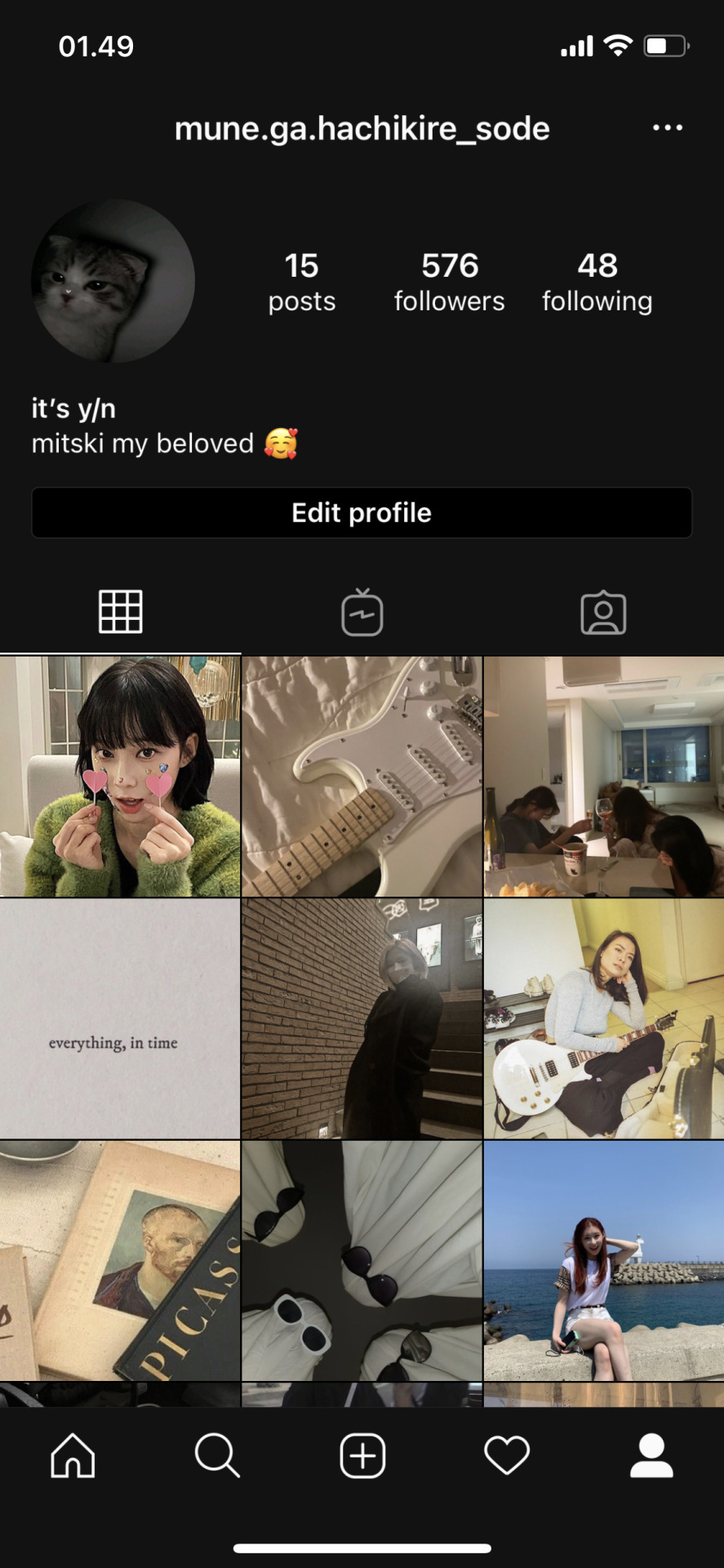
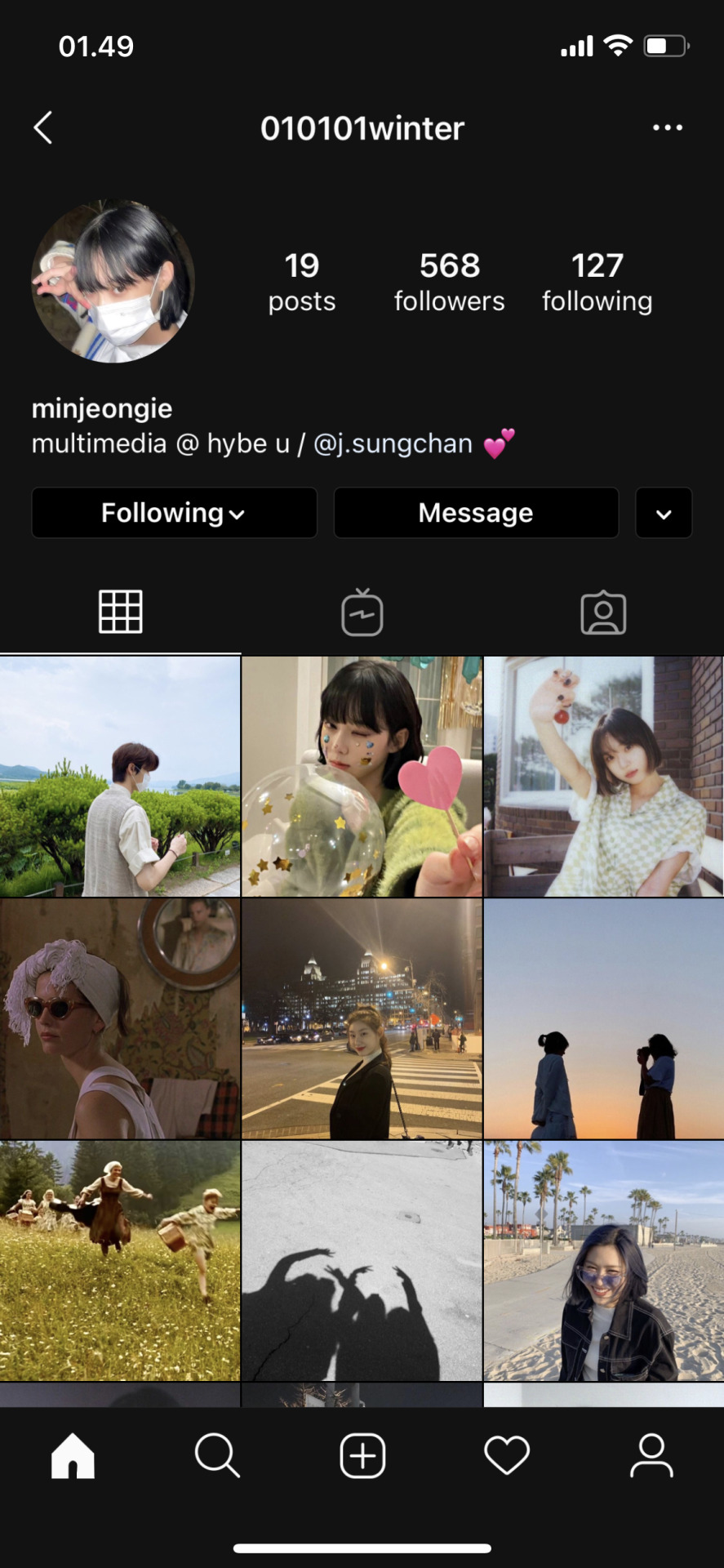
SHIN RYUJIN / LEE CHAERYEONG

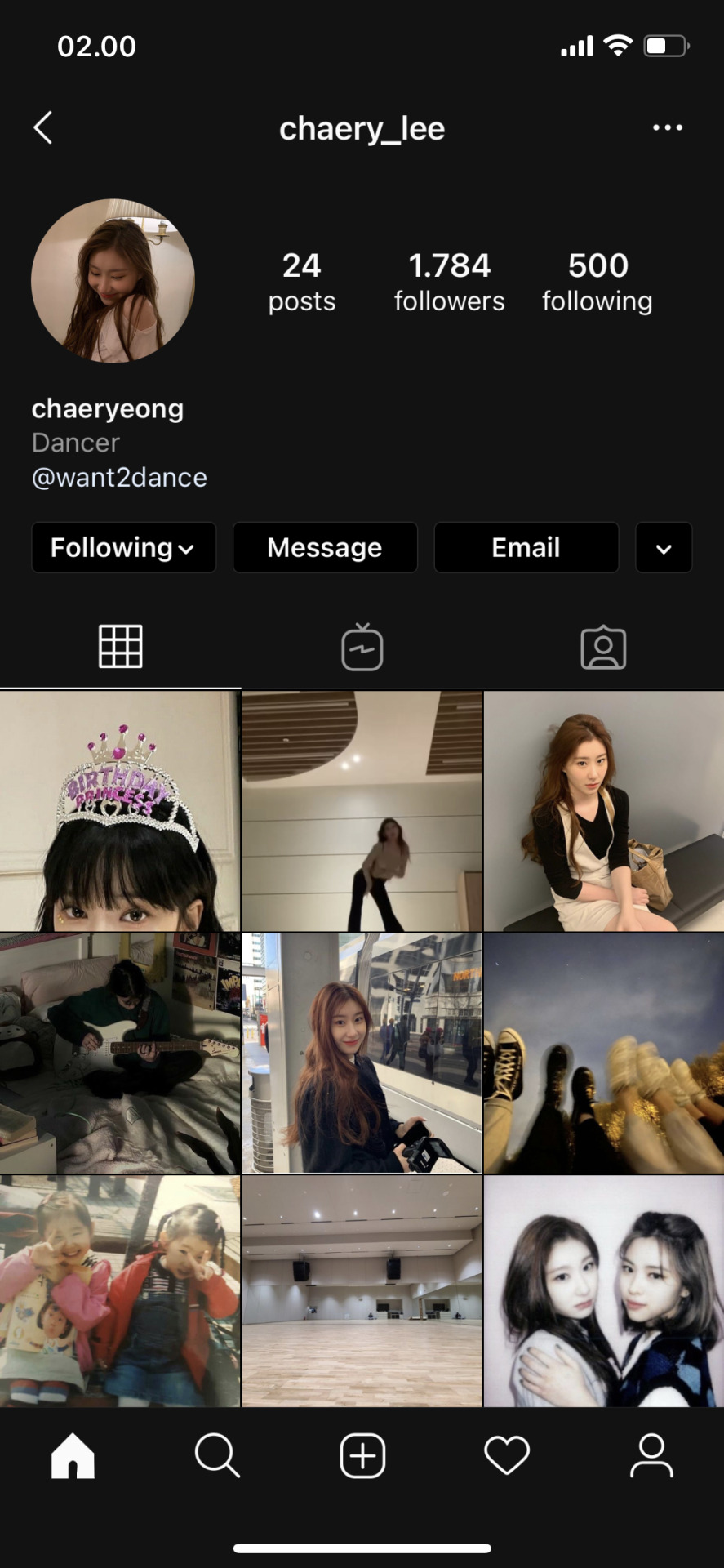
LEE HEESEUNG / CHOI BEOMGYU


YANG JEONGIN / LIM JIMIN



© writingmochi on tumblr, 2021-2024. all rights reserved
#enhypen imagines#enhypen smut#enhypen angst#enhypen fluff#enhypen x reader#enhypen scenarios#enhypen fanfiction#heeseung x reader#rsc: laurel hell#lmk if you wanna know more about things from your fav fics on this blog#interactivemochi is pretty inactive but i'm using that to do my oc kq girl group#but i'm trying to revive that when writing t.i#cause t.i has such a BIG world building
62 notes
·
View notes
Text






rainy sunsets are my favorite
#it's 4:45 in the morning so i'm going to bed now but not without showing you the incredible sunset i just experienced#simblr#the sims 3#ts3#sims 3#ts3 simblr#torneskär#the sims 3 create a world#ts3 build#the sims 3 scenery#ts3 scenery#the sims 3 caw#ts3 caw#ts3 world#sims 3 worlds#the sims 3 worlds#sims 3 world#the sims#sims 3 blog#sims 3 scenery#sims 3 screenshots#the sims 3 cc#sims 3 gameplay#sims 3 cc#aelisin#aelisinsims
96 notes
·
View notes
Text
post directory
wandering worldbuilding
wandering is my esoteric buddhist maritime asia bladepunk new weird lightcore fantasy setting. comes with the free web serial the knight vagrant
knight vagrant
the spiral hand martial art
on wealth in the utter islands (romance of the lotus throne)
chitters: skeletal enemies in romance of the lotus throne
the indigoflame
the four winds of the utter islands
pemi island region map
design thoughts
thoughts on design on games, writing, and more
the mandala battle system
thoughts on world-first design
thoughts on final fantasy xii: the zodiac age
ttrpgs and reals
realities, maximalism, and the need for big book™️
cross-disciplinary training in gubat banwa
Tactical Combat, Violence Dice and Missing Your Attacks in Gubat Banwa
On Posture In Gubat Banwa
#directory for the blog posts that i like lmao#tabletop rpg design#post directory#world building#fantasy thoughts#literature thoughts#at least the ones i wrote
107 notes
·
View notes